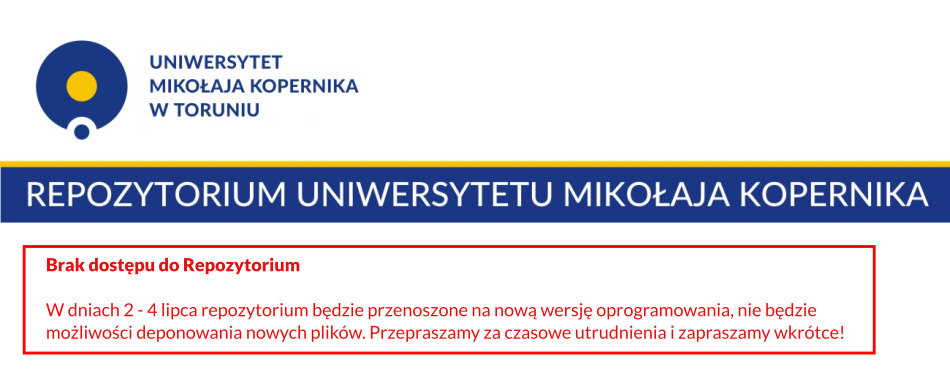| dc.contributor.author |
Krantz-Domasłowska, Liliana |
| dc.date.accessioned |
2014-03-17T17:01:58Z |
| dc.date.available |
2014-03-17T17:01:58Z |
| dc.date.issued |
2012-01-01 |
| dc.identifier.citation |
Acta Universitatis Nicolai Copernici Zabytkoznawstwo i Konserwatorstwo, No. 43, Vol. 410, pp. 29-40 |
| dc.identifier.issn |
0208-533X |
| dc.identifier.other |
doi:10.12775/AUNC_ZiK.2012.003 |
| dc.identifier.uri |
http://repozytorium.umk.pl/handle/item/1789 |
| dc.description.abstract |
The text is a theoretical justification for the method of research due to be applied in a study concerning four churches in medieval Toruń. Its aim is to make a short introduction to the matters of history, range and possible application of comparative research. This type of research is and so far has been a domain of literature specialists, yet the attempts to compare different works of art for their better understanding had been made in the past far more remote. The ancient Romans bearing in minds their dependence upon Greek culture intuitively compared the texts of both nations. Similarly, in modern times comparing was rather an unaware process. In 18th century the interest in comparative studies had been aroused but the main purpose was to exhibit the similarities and differences of compared works. Romanticism was a time when the notion of comparative literature took its form. Soon it became a new, distinguished field of study with a lot of departments of comparative literature being established. The most significant research was conducted by both German ( e.g. Fridrich and August Schlegel) and French scholars (initiated by A.F. Villemain). The next stage was the period of positivism when comparative study was classified as the history of literature’s field of research and has been considered a part of evolutionistic trend. The theory of continuity, development and borrowing (M. Haupt, J.A. Symonds) became significant. The end of 19th century was a renewed turn to the fact collecting and genetic research. This trend was also maintained in the beginning of 20th century. The creation of the AILC – an independent comparatists organization in Oxford in 1954 was the symbolic breakthrough, yet the real one occurred only in 1958 when two independent texts by French (R. Etiemble) and American scholars (R. Wellek) were published. They both criticized positivistic method of fact collecting and “influenceology” proposing comparative studies based upon deductive sciences. Regardless of the opinion on their views, they initiated the 20th century phase of the comparative studies development. This phase is characterized by the vast pluralism of views on the goals, range and status of comparative studies. Amongst diverse ideas the two research traditions emerge: French, restricted to comparison between literatures and rejecting textual criticism and American, preferring vast approach allowing to confront literature with the other humanities. The opinions based mainly upon the literature-specialist research are far more universal. The comparative study is practiced in the other fields of the humanities.Comparison is, with varying emphasis on different references, the essence of the work of art style analysis (H. Wölfflin, G. Kubler), its substance (E. Panofsky, J. Białostocki), structure (H. Sedlmayr) and a research apparatus to draw numerous conclusions such as date, authorship or genetic and typological progressions. All this serves one purpose – to capture similarities functioning on different levels between the examined work of art and the others, an by this to prove the artist’s dependence to his predecessor’s achievements. Eventually, this helps connecting the work of art with its roots and placing it in a suitable artistic tradition. It seems that amongst different comparative approaches one has to select those applicable to comparative studies of the main churches of the medieval Toruń. The basic guidelines are preserving the proper research apparatus for architectural history and taking advantage of the research from the other fields of the humanities. The decisive factors for creating a comparison, should be: situational similarities, convergence of problems, necessity of making similar choices. The main issue appearing in various moments would be the attempt to explain the function of the references between particular works of art. |
| dc.language.iso |
pol |
| dc.rights |
Attribution-NoDerivs 3.0 Poland |
| dc.rights |
info:eu-repo/semantics/openAccess |
| dc.rights.uri |
http://creativecommons.org/licenses/by-nd/3.0/pl/ |
| dc.subject |
toruńskie kościoły |
| dc.subject |
kościół dominikanów św. Mikołaja w Toruniu |
| dc.subject |
kościół św. Jana w Toruniu |
| dc.subject |
kościół św. Jakuba w Toruniu |
| dc.subject |
kościół Najświętszej Marii Panny w Toruniu |
| dc.subject |
badania komparatystyczne |
| dc.title |
Konteksty badań komparatystycznych – temat i metoda |
| dc.type |
info:eu-repo/semantics/article |


